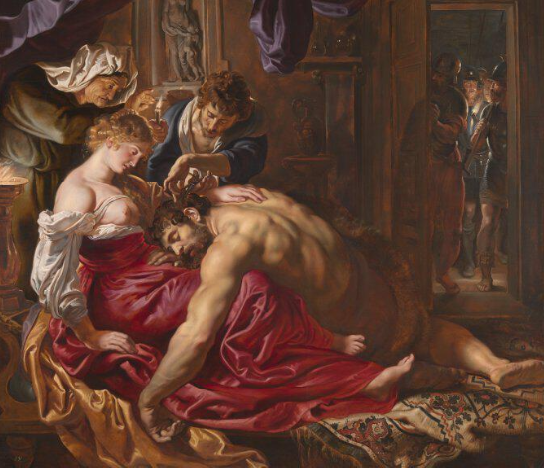 Peter Paul Rubens, Samson and Delilah, 1609. National Gallery of London
Peter Paul Rubens, Samson and Delilah, 1609. National Gallery of London
A painting attributed to Peter Paul Rubens, Samson and Delilah (1609–10), that hangs in London’s National Gallery has long been under suspicion as to whether it is in fact an authentic work by the Baroque artist. Research by the Swiss-based tech company Art Recognition, which uses artificial intelligence (AI) to authenticate artworks, has concluded that the painting has a 91 percent probability of being fake, according to a report in the Guardian.
Rubens did paint a scene of Samson and Delilah, depicting the biblical scene where Delilah orchestrates the cutting of a sleeping Samson’s hair, for one his major patrons Nicolaas Rockox, the mayor of Antwerp, but it disappeared after his death in 1640.
This Samson and Delilah allegedly only resurfaced in 1929 when Ludwig Bruchard, a Rubens expert, attributed the work to the artist. Suspicions regarding the work’s authenticity first began in 1960, after Bruchard’s death and it was revealed he provided certificates of authenticity for cash. More than 60 works by Rubens that were authenticated by Bruchard have since been identified as fakes, including two versions of Diana and Her Nymphs Departing for the Chase, respectively held at the Cleveland Museum of Art in Ohio and the J. Paul Getty Museum in Los Angeles.
The National Gallery purchased the work for a then-record price of £2.5 million from Christie’s in 1980. Over the years, several critics have questioned the Rubens attribution for the museum’s Samson and Delilah, including artist and independent scholar Euphrosyne Doxiadis who has claimed in several papers and interviews that certain details didn’t add up. Doxiadis pointed out that the National Gallery’s painting differed from the studies that Rubens made for the piece purchased by Rockox, including that Samson’s feet are cropped in the painting but shown in studies and engravings.
The recent discovery using AI technology is just another strike against the piece. Using a database of fake and authentic Rubens paintings, Art Recognition taught an AI bot to identify the minute details that comprised authentic Rubens works. Then, the trained bot analyzed the National Gallery’s Samson and Delilah by dividing the canvas into a grid and looking for signs of deviance from Rubens’s style square by square.
“We repeated the experiments to be really sure that we were not making a mistake and the result was always the same,” Carina Popovici, the scientist who led the AI analysis, told the Guardian. “Every patch, every single square, came out as fake, with more than 90% probability.”
However, it is unclear how the AI bot might adjust for the varieties in style that might be evidence of studio assistants hands. Art Recognition did not immediately respond to a request for comment.
In an email to ARTnews, the National Gallery said, “The Gallery always takes note of new research. We await its publication in full so that any evidence can be properly assessed. Until such time, it will not be possible to comment further.”
Source link : https://www.artnews.com/art-news/news/national-gallery-london-rubens-samson-and-delilah-ai-authentication-1234604957












